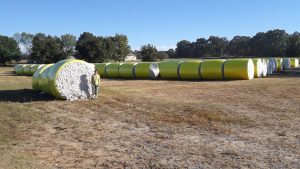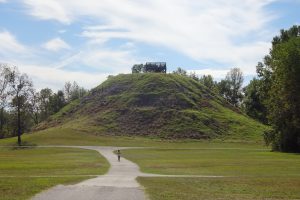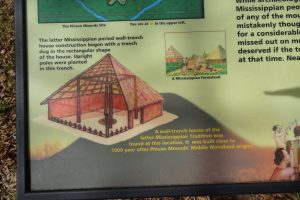13-14 Oct: As we began traveling from west to east through Tennessee, we were driving past farms in the relatively flat and fertile Mississippi River bottomlands. In contrast to our earlier trips across Midwestern plains states, where corn and soybeans dominate the fields, this time we have been seeing a lot of cotton fields passing through five former Confederate states. Nowadays, with mechanization and large-scale agribusiness having replaced hand labor by slaves and sharecroppers, cotton still appears to be a big industry in the South. Some of the vast fields of cotton were white with cotton bolls still on the withering plants, while others were bare except for dozens of huge cylindrical cotton bales ready to be hauled away.

Agriculture was already established in this region around 2,000 years ago, as documented at the Pinson Mounds State Archaeological Park’s museum that we visited. The Pinson site includes at least 30 mounds of varying sizes. The 17 mounds that have been archaeologically examined were determined to have been built during about 100-300, in the Middle Woodland period. The tallest mound is Sauls’ Mound, billed as the second highest surviving mound in the U.S., at 72 feet (the much older Mound A that we saw at Poverty Point is also 72 feet tall and is larger by volume). Although burials and cultural artifacts have been recovered at Pinson Mounds, the population does not seem to have been very large—the site may have been principally used as a ceremonial and trading gathering place. Radiocarbon dates also indicate some occupation at the Pinson site both earlier (Early Woodland period) and later (Mississippian period) than during the time the Pinson mounds were built.

